Group Staff

Julia E. Drummond (nee Pickering) - Lab Manager
Julia earned her BSc at the University of Ottawa and has been a former graduate student of the Geo- and Thermochronology Laboratory of the University of Calgary. In the course of her master thesis research she developed the apatite laser ablation (U-Th)/He method (Pickering et al., 2020). She has a deep passion for laboratory analyses and data sciences and enjoys working with students and other researchers in the lab.
Office: ES522
Phone: +1 (403) 210-7766
Email: [email protected]
Julia earned her BSc at the University of Ottawa and has been a former graduate student of the Geo- and Thermochronology Laboratory of the University of Calgary. In the course of her master thesis research she developed the apatite laser ablation (U-Th)/He method (Pickering et al., 2020). She has a deep passion for laboratory analyses and data sciences and enjoys working with students and other researchers in the lab.
Office: ES522
Phone: +1 (403) 210-7766
Email: [email protected]

Cindy Wheadon - Administration Manager
Cindy supports our group since 2023 through her rich experience working for various research groups at the University of Calgary. Her expertise ranges from grant administration, project management, procurements, budgeting and invoicing. She is a great asset to the entire group, helping us all to navigate the administrative black box of the university.
Email: [email protected]
Cindy supports our group since 2023 through her rich experience working for various research groups at the University of Calgary. Her expertise ranges from grant administration, project management, procurements, budgeting and invoicing. She is a great asset to the entire group, helping us all to navigate the administrative black box of the university.
Email: [email protected]
Postdoctoral Researcher

Dr. Akeek Maitra
Dr. Maitra's doctoral research focused on the uplift and exhumation history of of the Himalay by studying foreland basin sediments using detrital zircon U-Pb dating and apatite FT analysis. He earned his undergraduate and MSc degree in India and conducted his PhD studies at the Polish Academy of Sciences in Krakow, Poland. Dr. Maitra is working on detrital zircon LA-(U-Th)/He and U-Pb double dating on modern river deposits in the Southern Canadian Cordillera and method development.
Email: [email protected]
Dr. Maitra's doctoral research focused on the uplift and exhumation history of of the Himalay by studying foreland basin sediments using detrital zircon U-Pb dating and apatite FT analysis. He earned his undergraduate and MSc degree in India and conducted his PhD studies at the Polish Academy of Sciences in Krakow, Poland. Dr. Maitra is working on detrital zircon LA-(U-Th)/He and U-Pb double dating on modern river deposits in the Southern Canadian Cordillera and method development.
Email: [email protected]

Dr. Birk Haertel
Dr. Haertel's research interests are in the methodological development of dating techniques. He developed the zircon Raman dating technique during the course of his PhD thesis at the TU Bergakademie Freiberg in Germany. Birk works on a variety of projects here in Calgary including multi-method analyses on single apatite and zircon grains combining Raman analysis, elemental mapping and laser ablation (U-Th)/He and U-Pb dating.
Email: [email protected]
Research Gate
Dr. Haertel's research interests are in the methodological development of dating techniques. He developed the zircon Raman dating technique during the course of his PhD thesis at the TU Bergakademie Freiberg in Germany. Birk works on a variety of projects here in Calgary including multi-method analyses on single apatite and zircon grains combining Raman analysis, elemental mapping and laser ablation (U-Th)/He and U-Pb dating.
Email: [email protected]
Research Gate
Graduate Students

Muhammad Rafeeza (MSc student)
Muhammad will join our reserach group in Fall 2024. He received his Bachelor degree at the University of British Columbia, where he conducted a undergraduate thesis project in the Andes under the supervision of Dr. Joel Saylor. Muhammad will work on methodological development of using laser ablation (U-Th-Sm)/He dating on detrital apatites.
Muhammad will join our reserach group in Fall 2024. He received his Bachelor degree at the University of British Columbia, where he conducted a undergraduate thesis project in the Andes under the supervision of Dr. Joel Saylor. Muhammad will work on methodological development of using laser ablation (U-Th-Sm)/He dating on detrital apatites.

Tais Fontes Pinto (PhD student)
Tais joined our group in summer 2021 from Brazil, where she has conducted apatite fission track and U-Th/He dating on carbonatite rocks from a large shear zone for her Master thesis. Tais investigates the thermal evolution of the sedimentary basin in the southwestern portion of the Northwest Territory (NWT) using a variety of thermochornometric methods including LA-AFT, and apatite and zircon U-Th/He dating. This research is in collaboration with the Geological Survey of the NWT and the Geological Survey of Canada.
Email: [email protected]
Tais joined our group in summer 2021 from Brazil, where she has conducted apatite fission track and U-Th/He dating on carbonatite rocks from a large shear zone for her Master thesis. Tais investigates the thermal evolution of the sedimentary basin in the southwestern portion of the Northwest Territory (NWT) using a variety of thermochornometric methods including LA-AFT, and apatite and zircon U-Th/He dating. This research is in collaboration with the Geological Survey of the NWT and the Geological Survey of Canada.
Email: [email protected]

Baiansuluu Terbishalieva (PhD student)
Baiansuluu joined our research group in winter 2023. Coming from Kyrgyzstan where she earned her B.Sc. and worked several years in the gold mining industry. She earned her M.Sc. at the University of Potsdam (Germany) where she conducted a variety of geochemical analyses as well as thermchronology. Her research project centres around the exhumation history of the Intermontane belt in southern B.C. and the implication for Cu-porphyry exploration. This project is funded through a NSERC Alliance grant in collaboration with the MDRU unit of UBC.
Email: [email protected]
Baiansuluu joined our research group in winter 2023. Coming from Kyrgyzstan where she earned her B.Sc. and worked several years in the gold mining industry. She earned her M.Sc. at the University of Potsdam (Germany) where she conducted a variety of geochemical analyses as well as thermchronology. Her research project centres around the exhumation history of the Intermontane belt in southern B.C. and the implication for Cu-porphyry exploration. This project is funded through a NSERC Alliance grant in collaboration with the MDRU unit of UBC.
Email: [email protected]

Joel Padgett (PhD candidate)
Joel earned his undergraduate degree at Augustana College in the US and joint our research group in fall 2021. He is investigating the exhumation history of southwestern Yukon and the kinematics of several poorly exposed faults. He will use a variety of thermochronomeric methods towards this goal. This project is funded through a collaboration with the Yukon Geological Survey and the Geological Survey of Canada.
Email: [email protected]
Joel earned his undergraduate degree at Augustana College in the US and joint our research group in fall 2021. He is investigating the exhumation history of southwestern Yukon and the kinematics of several poorly exposed faults. He will use a variety of thermochronomeric methods towards this goal. This project is funded through a collaboration with the Yukon Geological Survey and the Geological Survey of Canada.
Email: [email protected]

Emily Johns-Buss (PhD candidate)
Emily is a PhD student at Memorial University of Newfoundland working with Dr. Luke Beranek on the opening of the North Atlantic Ocean. Emily is a visiting student in our group in Calgary for the second half of her graduate reserach and uses various low-temperature thermochronology methods to quantify the Paleozoic to Mesozoic cooling of bedrock exposed at the Newfoundland margin and its counterpart in Portugal.
Email: [email protected]
Emily is a PhD student at Memorial University of Newfoundland working with Dr. Luke Beranek on the opening of the North Atlantic Ocean. Emily is a visiting student in our group in Calgary for the second half of her graduate reserach and uses various low-temperature thermochronology methods to quantify the Paleozoic to Mesozoic cooling of bedrock exposed at the Newfoundland margin and its counterpart in Portugal.
Email: [email protected]
Undergraduate Students

Tegan Potvin (undergrad technician)
Tegan started to volunteer lab work in the Geo-and Thermochronology lab in spring 2024 and is now a new member of our technician team, mostly helping with the U-Th/He dating and LA-ICP-MS.
Email: [email protected]
Tegan started to volunteer lab work in the Geo-and Thermochronology lab in spring 2024 and is now a new member of our technician team, mostly helping with the U-Th/He dating and LA-ICP-MS.
Email: [email protected]

Joshua Oyedemi (undergrad technician)
Joshua is our newest member in the mineral separation lab. He started in winter 2024.
Email: [email protected]
Joshua is our newest member in the mineral separation lab. He started in winter 2024.
Email: [email protected]

Jesse Girard (undergrad technician)
Jessica is an expert in mineral separation and has worked on many projects since winter 2023.
Email: [email protected]
Jessica is an expert in mineral separation and has worked on many projects since winter 2023.
Email: [email protected]

Aaron Rowsell (undergraduate research project)
Aaron started in 2022 working as our mineral separation technician and became interested in learning more laboratory skills. He received a NSERC-Undergraduate Summer Reserach Award (2024) and will investigate the exhumation history in Portugal using (U-Th)/He analysis. His research project is part of the collaboration with Dr. Beranek at Memorial University and PhD student Emily Johns-Buss.
Email: [email protected]
Aaron started in 2022 working as our mineral separation technician and became interested in learning more laboratory skills. He received a NSERC-Undergraduate Summer Reserach Award (2024) and will investigate the exhumation history in Portugal using (U-Th)/He analysis. His research project is part of the collaboration with Dr. Beranek at Memorial University and PhD student Emily Johns-Buss.
Email: [email protected]
Former Students and Group Members

Elisha Whelan (B.Sc. 2024)
Elisha started in fall 2021 to work in our group and became our expert technician in the mineral separation lab. Since 2022 she has started a research project where she is conducting detrital zircon double-dating on Devonian strata. She was awarded a NSERC Undergraduate Student Research Award for the summer 2023.
Email: [email protected]
Elisha Whelan (B.Sc. 2024)
Elisha started in fall 2021 to work in our group and became our expert technician in the mineral separation lab. Since 2022 she has started a research project where she is conducting detrital zircon double-dating on Devonian strata. She was awarded a NSERC Undergraduate Student Research Award for the summer 2023.
Email: [email protected]

Scott Tiede (B.Sc. 2023)
Scott is conducting a undergraduate research thesis that investigates the geomorphology and upper crustal processes of the Intermontain belt of the Southern Canadian Cordillera. Scott received an NSERC undergraduate student research award.
Email: [email protected]
Scott is conducting a undergraduate research thesis that investigates the geomorphology and upper crustal processes of the Intermontain belt of the Southern Canadian Cordillera. Scott received an NSERC undergraduate student research award.
Email: [email protected]

Dr. Tobias Stephan (postdoc 2020–2022)
Dr. Stephan received a 2-year research fellowship from the DFG (German Research Foundation) and joined our group in December 2020. Tobias developed new techniques for stress analyses on the scale of entire tectonic plates. He applied his techniques to investigate selected regions such as the North American Cordillera and the European Alps. Tobias is now a postdoctoral fellow at Lakehead University.
Personal Website, Google Scholar
Dr. Stephan received a 2-year research fellowship from the DFG (German Research Foundation) and joined our group in December 2020. Tobias developed new techniques for stress analyses on the scale of entire tectonic plates. He applied his techniques to investigate selected regions such as the North American Cordillera and the European Alps. Tobias is now a postdoctoral fellow at Lakehead University.
Personal Website, Google Scholar
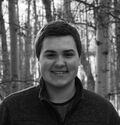
Kade Damant (M.Sc. 2022)
Kade has been part of our group since 2018, when he was in his second year of his undergraduate degree. He investigated the exhumation across the Columbia River Fault near Revelstoke for his undergraduate thesis und expanded this work for his master thesis research which he started in 2020.
Kade is now Junior Geologist at TerraLogic . The Canadian Tectonics Group awarded Kade with the Jack Henderson Award for the best MSc thesis of 2022. See his thesis presentation.
Kade has been part of our group since 2018, when he was in his second year of his undergraduate degree. He investigated the exhumation across the Columbia River Fault near Revelstoke for his undergraduate thesis und expanded this work for his master thesis research which he started in 2020.
Kade is now Junior Geologist at TerraLogic . The Canadian Tectonics Group awarded Kade with the Jack Henderson Award for the best MSc thesis of 2022. See his thesis presentation.

Dr. William Matthews (lab manager until 2022)
Dr. Matthews is an expert in zircon U-Pb dating and (U-Th-Sm)/He dating. His research interests are in methodological developments as well as the application of geo- and thermochronology to various geologic questions. Will has been working in many places such as Iran, Madagaska, western U.S. and particularly in the southwestern Canadian Cordillera.
Will continues to be an Adjunct professor at our department.
Email: [email protected] , Google Scholar
Dr. Matthews is an expert in zircon U-Pb dating and (U-Th-Sm)/He dating. His research interests are in methodological developments as well as the application of geo- and thermochronology to various geologic questions. Will has been working in many places such as Iran, Madagaska, western U.S. and particularly in the southwestern Canadian Cordillera.
Will continues to be an Adjunct professor at our department.
Email: [email protected] , Google Scholar
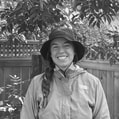
Alyson MacDougall (B.Sc. 2022)
Alyson has conducted mineral separation and apatite U-Th/He dating on rock samples collected from the Intermontane belt in central BC.
Alyson has conducted mineral separation and apatite U-Th/He dating on rock samples collected from the Intermontane belt in central BC.

Dr. Scott Jess (postdoc 2019–2021)
Dr. Jess has experience in low-temperature thermochornology and thermal modeling, which he applies to a variety of tectonic settings. In Calgary he has been studying to determine the longevity of hot springs in the Canadian Cordillera (Jess et al., 2021) and the landscape evolution of the Appalachian Mountains using detrital apatite Laser Ablation (U-Th)/He analysis. (Jess et al., 2022, 2023)
Scott is now a Assistant Professor at the Washington State University. Scott's website.
Dr. Jess has experience in low-temperature thermochornology and thermal modeling, which he applies to a variety of tectonic settings. In Calgary he has been studying to determine the longevity of hot springs in the Canadian Cordillera (Jess et al., 2021) and the landscape evolution of the Appalachian Mountains using detrital apatite Laser Ablation (U-Th)/He analysis. (Jess et al., 2022, 2023)
Scott is now a Assistant Professor at the Washington State University. Scott's website.

Andreas Aebersold (B.Sc. 2021)
Andreas investigated the exhumation history of the Death Valley shear zone. He used apatite and zircon (U-Th)/He dating and thermal history modeling to investigate spatial trends in the thermal history. This project was conducted in collaboration with Dr. Ghislain Trullenque and colleague's from Uni LaSalle.
Andreas investigated the exhumation history of the Death Valley shear zone. He used apatite and zircon (U-Th)/He dating and thermal history modeling to investigate spatial trends in the thermal history. This project was conducted in collaboration with Dr. Ghislain Trullenque and colleague's from Uni LaSalle.

Kelley Fraser (M.Sc. 2020)
Kelley joined the group in summer 2018. In her research project, Kelley aimed to quantify the Cenozoic exhumation along and across the central Rocky Mountain Trench. She used apatite fission track and U-Th/He dating on bedrock samples she collected in the Valemount and McBride area (British Columbia) in the southern Canadian Cordillera. Kelleys work is published in Fraser et al., 2021 (Tectonics).
Kelley joined the group in summer 2018. In her research project, Kelley aimed to quantify the Cenozoic exhumation along and across the central Rocky Mountain Trench. She used apatite fission track and U-Th/He dating on bedrock samples she collected in the Valemount and McBride area (British Columbia) in the southern Canadian Cordillera. Kelleys work is published in Fraser et al., 2021 (Tectonics).

Ryan McKay (M.Sc. 2020)
Ryan joined the group in summer 2018 where we went to the Richardson Mountains in the NWT for sampling. Ryan investigated the exhumation history at the northeastern margin of the Canadian Cordillera. This project was in collaboration with Thomas Hadlari from the Geological Survey of Canada. The manuscript highlighting Ryan's research has been published in McKay et al., 2021 (Tectonics). Ryan is now working for Coeur Mining at the Silvertip Mine, a Ag-Pb-Zn mine in northernmost BC. The Canadian Tectonics Group awarded Ryan with the Jack Henderson Award for the best MSc thesis of 2020. See thesis presentation video
Ryan joined the group in summer 2018 where we went to the Richardson Mountains in the NWT for sampling. Ryan investigated the exhumation history at the northeastern margin of the Canadian Cordillera. This project was in collaboration with Thomas Hadlari from the Geological Survey of Canada. The manuscript highlighting Ryan's research has been published in McKay et al., 2021 (Tectonics). Ryan is now working for Coeur Mining at the Silvertip Mine, a Ag-Pb-Zn mine in northernmost BC. The Canadian Tectonics Group awarded Ryan with the Jack Henderson Award for the best MSc thesis of 2020. See thesis presentation video

Molly Csak (B.Sc. 2020)
Molly conducted a summer research project that investigates the upper crustal cooling history of the Southern Canadian Cordillera. She reviewed and compiled published low-temperature thermochronology data that she integrated in ArcGIS. Molly received an NSERC undergraduate student research award.
Molly conducted a summer research project that investigates the upper crustal cooling history of the Southern Canadian Cordillera. She reviewed and compiled published low-temperature thermochronology data that she integrated in ArcGIS. Molly received an NSERC undergraduate student research award.

Jenny Arkle (Ph.D. 2019)
Jenny investigated the tectonic-climate-surface process interactions of Trinidad and Tobago. She used geomorphic analyses (GIS) and traditional field mapping in tandem with a variety of dating tools, such as low-temperature thermochronology, cosmogenic, and optically stimulated luminescence dating. Jenny is now a faculty member at Augustana College and the Program Manager for the Upper Mississippi Center. Parts of her thesis have been published in Arkle et al., 2017 Geomorphology and Arkle et al., 2021 Tectonics
Jenny investigated the tectonic-climate-surface process interactions of Trinidad and Tobago. She used geomorphic analyses (GIS) and traditional field mapping in tandem with a variety of dating tools, such as low-temperature thermochronology, cosmogenic, and optically stimulated luminescence dating. Jenny is now a faculty member at Augustana College and the Program Manager for the Upper Mississippi Center. Parts of her thesis have been published in Arkle et al., 2017 Geomorphology and Arkle et al., 2021 Tectonics

Ryan Grieco (B.Sc. 2019)
Ryan investigated the exhumation history of the Rocky Mountain Trench in the Valemount, B.C. area.. Ryan used apatite U-Th/He analysis and temperature-time path modeling to quantify timing, rates and amounts of exhumation across the main structure of the trench. Ryan presented his results at the GeoREX conference in April 2019, where he received the best poster award. Ryan is now employed as a Geophysicist at Canadian Natural Resources Limited in Calgary. His work was published in Fraser et al., 2021
Ryan investigated the exhumation history of the Rocky Mountain Trench in the Valemount, B.C. area.. Ryan used apatite U-Th/He analysis and temperature-time path modeling to quantify timing, rates and amounts of exhumation across the main structure of the trench. Ryan presented his results at the GeoREX conference in April 2019, where he received the best poster award. Ryan is now employed as a Geophysicist at Canadian Natural Resources Limited in Calgary. His work was published in Fraser et al., 2021

Nathaniel Bootes (M.Sc. 2018)
Nate investigated the Late Miocene to Pleistocene borehole material from the Yakutat shelf in Southeast Alaska. The primary goal of the project was to investigate changes in exhumation rates in the adjacent St. Elias Mountains throughout the past using detrital zircon fission track and U-Pb dating. This project was funded by the ACS – PRF and conducted in collaboration with Dr. Richard Lease (USGS). Nate's thesis was published in Bootes et al., 2019 Tectonics. Nate followed his girlfriend and moved to Amsterdam in the Netherlands, where he works for Toyota.
Nate investigated the Late Miocene to Pleistocene borehole material from the Yakutat shelf in Southeast Alaska. The primary goal of the project was to investigate changes in exhumation rates in the adjacent St. Elias Mountains throughout the past using detrital zircon fission track and U-Pb dating. This project was funded by the ACS – PRF and conducted in collaboration with Dr. Richard Lease (USGS). Nate's thesis was published in Bootes et al., 2019 Tectonics. Nate followed his girlfriend and moved to Amsterdam in the Netherlands, where he works for Toyota.
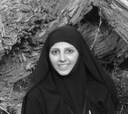
Sedighe Khodaparast (PhD 2019)
Sedighe is a visiting PhD student from the Tarbiat Modares University in Tehran (Iran). In her thesis research she is investigating the spatial and temporal evolution of the 160 km long Kushk-e-Nosrat strike-slip fault located in central Iran. The structural dataset has been published in Khodaparast et al., 2020 Journal of Geodynamic
Sedighe is a visiting PhD student from the Tarbiat Modares University in Tehran (Iran). In her thesis research she is investigating the spatial and temporal evolution of the 160 km long Kushk-e-Nosrat strike-slip fault located in central Iran. The structural dataset has been published in Khodaparast et al., 2020 Journal of Geodynamic

Sonia Sanchez Lohff (M.Sc. 2018)
Sonia is working on the sedimentary record of the Cook Inlet forearc basin in southern Alaska. She uses detrital zircon fission track and U-Pb dating to investigate how varying subduction styles (spreading-ridge subduction, oceanic plateau) affected southern Alaska since the Jurassic time. This project was funded by the NSF and in conducted in collaboration with Dr. Emily Finzel (University of Iowa). Sonia's reserch results were published in Enkelmann, Sanchez Lohff, Finzel, E. 2019. GSA Bulletin
Sonia is now employed at FracGeo in Houston, TX
Sonia is working on the sedimentary record of the Cook Inlet forearc basin in southern Alaska. She uses detrital zircon fission track and U-Pb dating to investigate how varying subduction styles (spreading-ridge subduction, oceanic plateau) affected southern Alaska since the Jurassic time. This project was funded by the NSF and in conducted in collaboration with Dr. Emily Finzel (University of Iowa). Sonia's reserch results were published in Enkelmann, Sanchez Lohff, Finzel, E. 2019. GSA Bulletin
Sonia is now employed at FracGeo in Houston, TX

Anna Schartman (B.Sc. 2018)
Anna's research project centers on the quantification of the timing and spatial pattern of rock exhumation at the northern end of the Fairweather Fault located in the Yakutat Bay area in Southeast Alaska. Her results are now published in Schartman et al., 2019 (Lithosphere). Anna is now a PhD student at the Ocean Science Department at UC Santa Cruz working in the group of Dr. Polissar to study paleovegetation and paleo climate changes since the Miocene.
Anna's research project centers on the quantification of the timing and spatial pattern of rock exhumation at the northern end of the Fairweather Fault located in the Yakutat Bay area in Southeast Alaska. Her results are now published in Schartman et al., 2019 (Lithosphere). Anna is now a PhD student at the Ocean Science Department at UC Santa Cruz working in the group of Dr. Polissar to study paleovegetation and paleo climate changes since the Miocene.
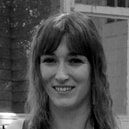
Catherine Dunn (M.Sc. 2016)
Katie has been working on glacio-marine sediment samples obtained from 5 boreholes that have been drilled in 2013 by the IODP Expedition 341. She used detrital zircon fission track and U-Pb dating (double-dating) to investigate the sediment provenance and routing from the St. Elias Mountain to the shelf and the deep sea, as well as the exhumation history of the source region. Catherine published her research in Dunn et al., 2017, JGR-ES.
Katie is now the separation lab manager at the Department of Geological Sciences at Stanford University.
Katie has been working on glacio-marine sediment samples obtained from 5 boreholes that have been drilled in 2013 by the IODP Expedition 341. She used detrital zircon fission track and U-Pb dating (double-dating) to investigate the sediment provenance and routing from the St. Elias Mountain to the shelf and the deep sea, as well as the exhumation history of the source region. Catherine published her research in Dunn et al., 2017, JGR-ES.
Katie is now the separation lab manager at the Department of Geological Sciences at Stanford University.
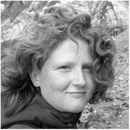
Sarah Falkowski (Ph.D. 2016)
Sarah studied the spatial and temporal changes in rock exhumation at the St. Elias syntaxis at the active Yakutat–North American collision zone, SE Alaska/SW Yukon. She used multiple geo- and thermochronologic methods to analyze glacial detrital material of sand and cobble size. Sarah's work has been published in Falkowski et al., 2014 (Tectonics), 2016 (Tectonics), Falkowski & Enkelmann, 2016 (Lithosphere), Enkelmann et al., 2017 (EPSL).
Sarah is now a research scientist at the University of Tuebingen working with Todd Ehlers.
Sarah studied the spatial and temporal changes in rock exhumation at the St. Elias syntaxis at the active Yakutat–North American collision zone, SE Alaska/SW Yukon. She used multiple geo- and thermochronologic methods to analyze glacial detrital material of sand and cobble size. Sarah's work has been published in Falkowski et al., 2014 (Tectonics), 2016 (Tectonics), Falkowski & Enkelmann, 2016 (Lithosphere), Enkelmann et al., 2017 (EPSL).
Sarah is now a research scientist at the University of Tuebingen working with Todd Ehlers.

Adam Piestrzeniewicz (M.Sc. 2015)
Adam investigated the temporal and spatial pattern of rock exhumation in the St. Elias syntaxis and north of it, located in the Kluane National Park (Yukon, Canada). He conducted apatite fission-track analysis and combined the data with zircon fission-track, and apatite and zircon U-Th/He data from the same sample.
Adam's research has been published in Enkelmann, E., Piestrzeniewicz, A., Falkowski, S. et al., 2017 (EPSL).
Adam moved back to southern California and is a staff geologist at Haley & Aldrich (Environmental and Geotechnical Consulting)
Adam investigated the temporal and spatial pattern of rock exhumation in the St. Elias syntaxis and north of it, located in the Kluane National Park (Yukon, Canada). He conducted apatite fission-track analysis and combined the data with zircon fission-track, and apatite and zircon U-Th/He data from the same sample.
Adam's research has been published in Enkelmann, E., Piestrzeniewicz, A., Falkowski, S. et al., 2017 (EPSL).
Adam moved back to southern California and is a staff geologist at Haley & Aldrich (Environmental and Geotechnical Consulting)
David Grabowski (M.Sc. 2012)
David investigated cobbles from the Seward-Malaspina Glacier system to identify lithologies that have been exhumed extremely rapidly underneath the ice that covers the St. Elias Mountains. He combined field mapping, petrology on thin section and zircon U-Th/He dating to characterize varying exhumation sources. David published his thesis research in Grabowski et al., 2013 (JGR-ES)
Since graduation David is a full time staff geologist at Walter & Partner GbR in Tauberbischofsheim (Germany).
David investigated cobbles from the Seward-Malaspina Glacier system to identify lithologies that have been exhumed extremely rapidly underneath the ice that covers the St. Elias Mountains. He combined field mapping, petrology on thin section and zircon U-Th/He dating to characterize varying exhumation sources. David published his thesis research in Grabowski et al., 2013 (JGR-ES)
Since graduation David is a full time staff geologist at Walter & Partner GbR in Tauberbischofsheim (Germany).
Gabriel Merli (Diploma 2014)
Gabriel investigated the cooling record of detrital apatite grains that were deposited in the Eocene Chumstick Basin in Washington State (USA). Gabriel conducted apatite U-Th/He dating and thermal history modeling to reveal the varying thermal history of the basin and timing of basin inversion. His result together with apatite fission track analysis are published in Enkelmann, Ehlers, Merli, Methner 2015 (Tectonics).
Gabriel is now employed as a engineering and field geologist at Henke and Partner GmbH.
Gabriel investigated the cooling record of detrital apatite grains that were deposited in the Eocene Chumstick Basin in Washington State (USA). Gabriel conducted apatite U-Th/He dating and thermal history modeling to reveal the varying thermal history of the basin and timing of basin inversion. His result together with apatite fission track analysis are published in Enkelmann, Ehlers, Merli, Methner 2015 (Tectonics).
Gabriel is now employed as a engineering and field geologist at Henke and Partner GmbH.
Proudly powered by Weebly